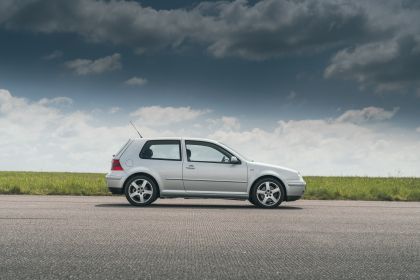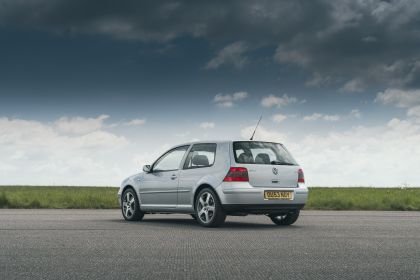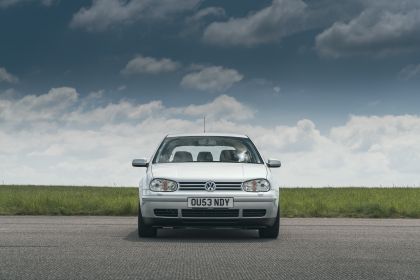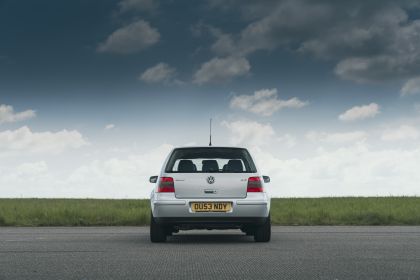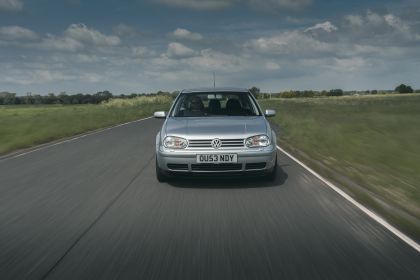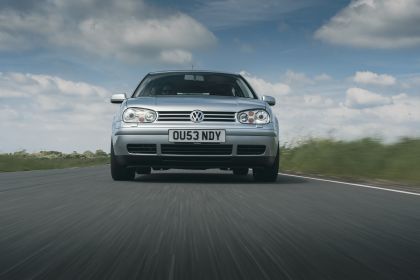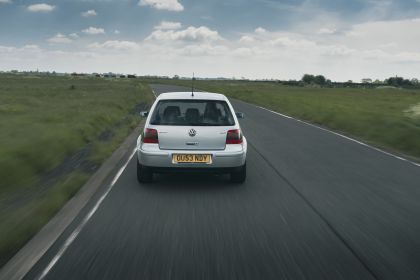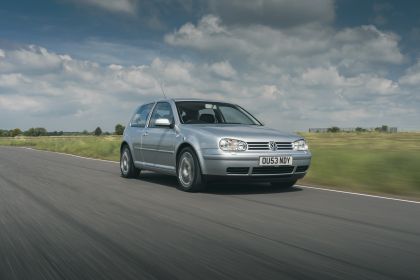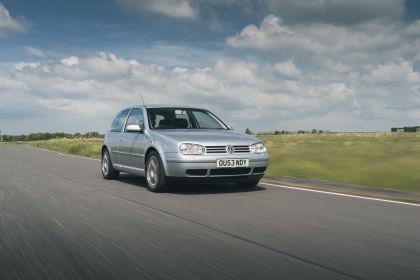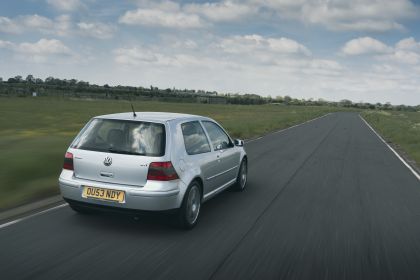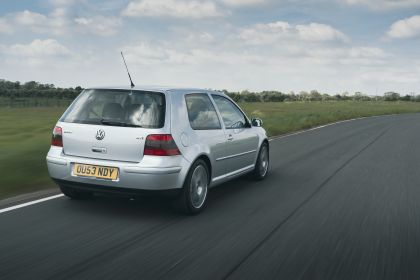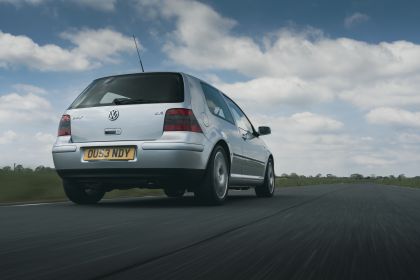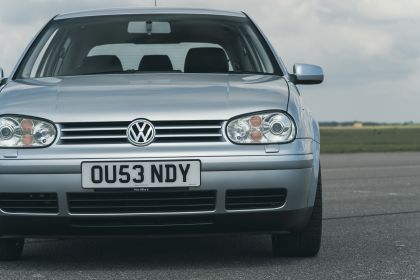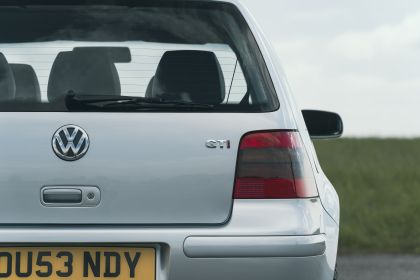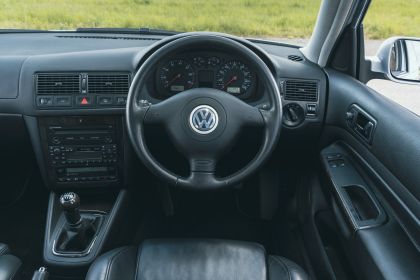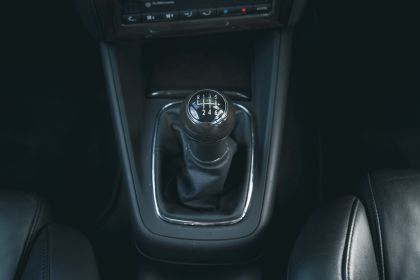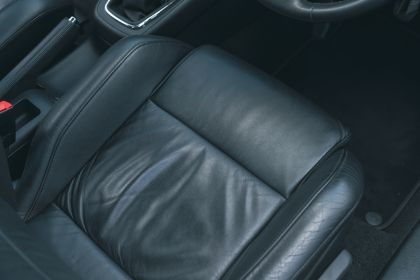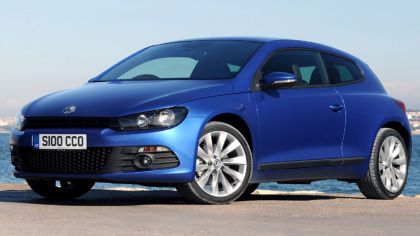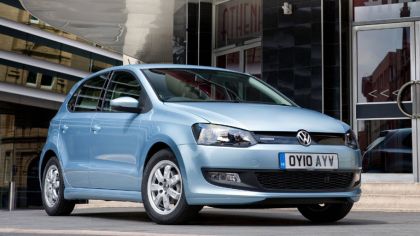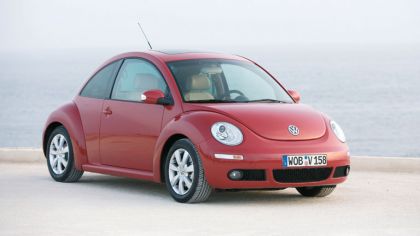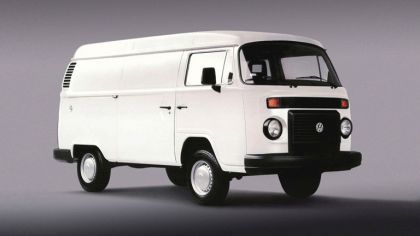Under the direction of Hartmut Warkuß, then Head of Design at Volkswagen (Group), the clear, precise design emerged for the Golf IV that did justice to the history of the Volkswagen brand more than ever before while setting its course to the future. It is in this era that the Volkswagen design DNA has its origins. Today, design experts regard the Golf IV as a style icon and a pioneering step for the model - not least because all its clarity and the characteristic C-pillar design forged a link back to the Golf I of 1974.
However, the Golf IV was not only pioneering in terms of its looks, it was groundbreaking in its engineering as well. With this car Volkswagen achieved a totally new standard of quality in this market segment and thus became the first manufacturer to overcome vehicle class boundaries. With the debut of ESC (in 1998) and the brake assistant system, the car continued to democratise safety. Also in 1998, Volkswagen unveiled the first all-wheel drive Golf with a Haldex clutch - the Golf 4MOTION. One year later, ESC became a standard feature, initially in Germany. In the same year, the first Golf with six-speed transmission made its debut. In 2001 the Volkswagen Golf GTI 132kW (launched to mark the GTI's 25th anniversary and now already sought-after as a classic) and in 2002 the first Golf with petrol direct injection (FSI) and the debut of window airbags fitted as standard followed. Also in 2002, Volkswagen launched what at the time was the sportiest Golf ever: the R32, with a top speed of 250 km/h. It was this top model of the range that in 2003 was the first ever to be available with the revolutionary fast and fuel-efficient dual-clutch gearbox (DSG) - the automatic transmission for a new era. In the same year, after production of 4.92 million units, the Golf IV - the first fully galvanised Golf and the first available with a navigation system and xenon headlights - made way on the production lines for the Golf V. Including all derivatives, a total of 4.99 million fourth generation units was produced - that is, 0.83 million Golf cars annually.
The Golf IV design
A brief recap of 1997: the slogan "Let me entertain you" turned Robbie Williams from a teen idol into a worldwide star; Princess Diana died in Paris, Michael Schumacher became world champion for a fifth time, and Volkswagen presented the fourth generation of the Golf - in terms of design, the purest and clearest yet. This Golf is created under the direction of Hartmut Warkuß (Head of Design at Volkswagen until 2003); and it's generally accepted that this design has already made history. Warkuß says: "The Golf is a monument. A car that smoothly entered into the footsteps of the globally successful Beetle. It made good sense then, to complement the company strategy in an evolutionary rather than revolutionary fashion. It is important to demonstrate continuity at a very high level." And that's exactly what Warkuß did with the fourth Golf!
However, nothing is copied from the Golf III. On the contrary: not a single body panel is taken on from the predecessor for the entirely redesigned, new generation Golf. The front window is flatter, the rear window is steeper, the roof extends even further back. Even Giorgio Giugiaro, creator of the first Golf design of 1974, expressed his admiration for the new car: "The original DNA of the Golf remains evident in its fourth generation." Giugiaro's compliment referred to the purism of the lines, the conscious reduction to the essential shape, which made the fourth generation Golf stand out. The logical yet elegant profile of the body joints, such as the parallel sweep that characterises the side view around the rear roof pillar are striking - the "nicked" C. Equally distinctive: the clear styling of the front and rear designs, as well as the strikingly sculptured wheel arches. Another novelty as an apostil: for the first time, the rear registration plate on the Golf is no longer between the tail lights, but deeply integrated inside the bumper.
The Golf IV did away with the wedge shape and shoulder. Rather, a completely smooth surface now characterised the silhouette, and the powerful wheel arches perfected this clarity. Another unique feature of that time was the aforementioned parallel lines of the C-pillar as a stylistic element that is now once again a defining feature of the Golf VII. This development began with the Golf IV - with its reduction to essentials, today it is regarded as a true masterpiece.

